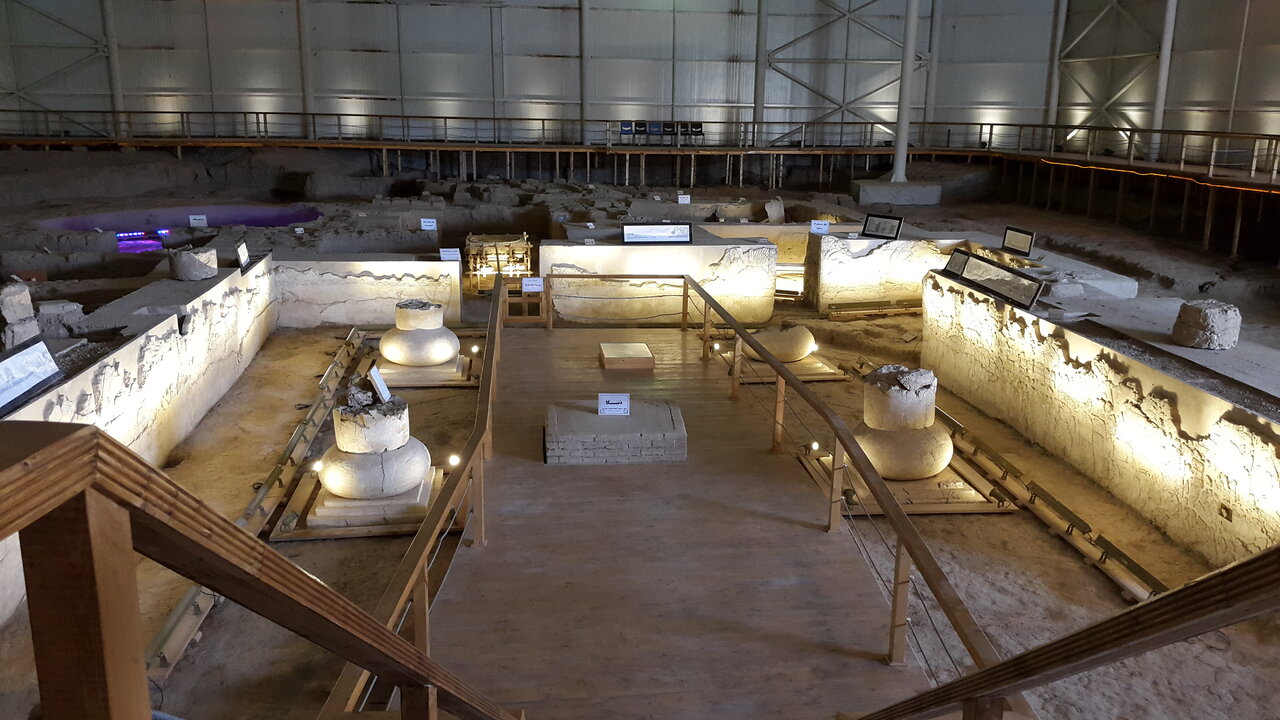Bandian complex offers time travels to Sassanid era

TEHRAN – An experience of traveling back in time to see magnificent examples of ancient plasterwork, bas-relief carvings, and other decorative elements is probably an unreachable dream.
Bandian complex, a site museum chockful of Sassanid architecture and arts in northeast Iran, offers visitors a time travel to the longest-lived Persian imperial dynasty, which endured for over four centuries, from 224 to 651 CE.
The archaeological was originally a fire Temple that is situated in Dargaz county of Khorasan Razavi province near the medieval city of Abiward.
During the leveling of agricultural land in 1990, this ancient complex was found. Since 1994, there have been excavations and inquiries.
In addition, a Zoroastrian sanctuary was discovered during the excavations, with most of its ornamentation and architectural details still intact. A significant portion of the stucco reliefs had survived, though the upper portions had not.
The main hall of the fire temple, as well as a number of its rooms and corridors, were discovered during the site's six seasons of excavation.
The flat ceiling of the building was supported by four lime columns in the hall. Interesting structural features include the strengthening of the columns. The mihrab (arched niche) of the structure is another noteworthy feature.
The spacious hall is covered in numerous stucco reliefs that show scenes from a hunt, battle, triumph, ritual, investiture, and banquet. In the Hephthalite-Persian Wars, Persian victories are depicted in it.
Available evidence suggests that the complex dates back to the reign of Peroz (459-484 CE) or his son Kavad I (488-497 CE).
The Sassanid era is of very high significance in the history of Iran. Under Sassanids, various arts and architecture experienced a general renaissance.
The palaces at Ctesiphon, Firuzabad, and Sarvestan are examples of grandiose architecture that frequently adopted oversized proportions in that epoch.
Metalworking and gem engraving were two examples of highly developed crafts. Books were translated into Pahlavi, the Sassanian language, during that period from both the East and the West.
Top examples of Sassanian art can be found at Bishapur, Naqsh-e Rostam, and Naqsh-e Rajab in southern Iran. Rock-carved sculptures and bas-reliefs on abrupt limestone cliffs are widely regarded as characteristics and striking relics of Sassanian art.
The Sassanids' efforts also resulted in a resurgence of Iranian nationalism; for instance, Zoroastrianism was proclaimed the state religion.
In the years 637 to 651, Arab invaders overthrew the dynasty that Ardashir I helped create. The dynasty was given its name in honor of Ardashir I's ancestor Sasan.
The Sassanid archaeological landscape shows how the earliest cultural centers of the Sassanid civilization were built using an extremely effective system of land use and careful consideration of the local topography.
AFM
Leave a Comment